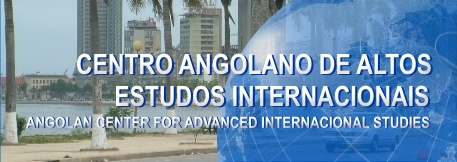![]()
|
|
 |
|
|
|
|
|
|
|
|
|
|
THE PROVINCE
OF KUANZA NORTE
Fishing Although it was affected during the war, the commercial and hotelling network in Kwanza Norte is expending rapidly. Kwanza Norte and especially Cambambe, starts to be a place of reference for Angolan and foreign tourists alike.
After having been Angolan Ambassador to Cuba - considered by many
to be a school of diplomacy - Manuel Pedro Pacavira was the Angolan Ambassador
to the United Nations during the difficult years of the Reagan administration. |
Natural Attractions Caculama Forest Reserve: This reserve is flanked in the north and west by the River Zenza, and to the south and east by the River Calucala. It has an area of 800 Km'.
Rivers
Angling
The beautiful capital of Kwanza Norte, Ndalatando, was once called Salazar in honour of the Portuguese dictator, Antonio Oliveira Salazar. The small city lies at the foot of Mount Pinda, tucked into a lush green valley. Along with Kwanza Sul and Uige, Kwanza Norte was the heartland of robusta coffee production during the colonial period. At that time Angola was the world’s leading exporter of robusta, which is used as a base for most coffee blends. But if real peace returns to the country, Kwanza Norte could once again become a major producer not only of coffee, but also of cotton and cereals. The northern part of the province is dense, tropical forest and the south is savannah, ideal for cattle rearing.
Kwanza Norte’s real strength is its massive water resources, with three big rivers passing through the province – the Zenza, Lukala and Kwanza Rivers. These provide water for irrigation and the potential for hydroelectric power. Lying in Middle River Kwanza, on the border between Kwanza Norte and the province of Malange is the largest ever civil construction project in Angola, was started in 1986 with a state investment of $750 million paid in oil supplies to foreign companies. To date, an estimated $ 4 billion has been invested in the project, which is run by GAMEK, a state-owned company, with construction work carried out by Brazilian and Russian companies.
However, the dam has yet to produce any hydroelectric
power and it is seen in some quarters as something of a white
elephant. According to GAMEK’s original schedule, Capanda was supposed to start generating power in December 1993. However, as GAMEK managing Director José Sonnenberg says, “Capanda was
attacked by UNITA in November, 1992 and they occupied the area until December, 1994. The dam was badly damaged, and we didn’t start rehabilitating it until 1998. Unfortunately, Capanda was attacked again in 1999, and was paralysed once more. We were only able to restart construction in
January 2000 and we now hope to start producing power in December this year. The total cost of war damage to Capanda is well over $ 400 million”.
Technically, there are two phases to the
Capanda project, the first involving the construction of two 130-megawatt turbines. The second phase would bring the total power generating capacity of the dam to 520 megawatts. This would surpass the whole of Angola’s current hydroelectric capacity.
Thanks to its proximity to the capital city, Kwanza Norte has also attracted a number of industries. These include the Eka brewery in Dondo and a factory that produces spirits from pineapple juice. There is currently a textile plant as well, though this is out of operation at present. If and when the Capanda plant starts generating power, it is likely that Kwanza Norte will attract more industry and foreign investment. However, until the white elephant rises from its slumber, the kwanza norte will remain something of a provincial backwater. Capital: N’Dalatando; Area: 24.110 sq. Km; Population: 400.000 inhab.; City Councils: 13 – Cazengo, Lucala, Ambaca, Golungo Alto, Dembos, Bula Atimba, Cambambe, Quitulungo, Bolongongo, Banga, Samba Cajú, Gonguembo, Pango Alúquem; Cimate: Tropical; Main Products: agricultural: coffee, palms, sunflower, rice, cotton, banana, gardening, sugar-cane, beans, mandioc; minerals: iron, manganese, calcareous rocks, copper.
|
|
|